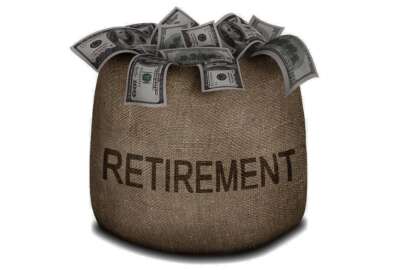Q: What do some of the government’s oldest and longest-serving employees have in common with the hairy-nosed wombat?
A: Both are on the endangered species list. The difference is that the wombat population is growing ever so slightly whereas as the long-time CSRS-covered civil servants grow fewer each year.
CSRS stands from Civil Service Retirement System. It’s a stand-alone plan — like the private sector had back in the day — where employees contribute a small portion of their income and Uncle Sam offers them a lifetime-annuity with inflation protection.
CSRS was replaced by the Federal Employee Retirement System in the 1980s. FERS offers a less generous civil service annuity, Social Security coverage and a more generous 401k plan — the Thrift Savings Plan — than available to CSRS employees. The FERS program forces workers to finance more of their retirement and costs Uncle Sam less. At the time of the switch there was speculation that when the number of CSRS employees got to a certain level, the government might seek to move them into FERS (which would require legislation) to save money. So is that end date approaching?
In 1994, according to the Congressional Research Service, just over half (52%) of all federal workers (1.4 million) were under the CSRS program. That has dropped dramatically as CSRS-covered people leave government, retire or die. In 2016 the CSRS population was less than 6%. There were 159,000 under CSRS, compared to 2,529,000 under FERS. That gap continues to grow.
Meantime, many CSRS workers are closing in on 41 years, 11 months of service when they can retire on the equivalent of 80% pay, more than double the benefit available under FERS.
So what if the government — or one of its independent operations — gave current CSRS employees a choice: Retire by a to-be-determined date and get full CSRS credit for their annuity, or continue in their jobs but with future benefits compiled under the less-generous FERS system.
A high-ranking, longtime career official said he’s heard there is a plan in the works that would end the CSRS program by giving employees the option. He said it would save the government salary money, reduce future retirement costs and give agencies the option of filling those CSRS jobs with lower-paid (less senior) people, or not filling them at all.
The head of a professional group with an excellent legislative tracking service said “I have not heard this,” he said. But he added, “I try to keep abreast of what is happening at U.S. Postal Service because, as a quasi-government federal entity, they seem to have there own set of rules. For example, an issue that I believe recently jumped out in the news was that one of their supervisor groups was negotiating a new salary deal! So anything may be possible at USPS!”
USPS, unlike most other federal operations, negotiates over wages and working conditions with powerful unions representing the clerk, carrier and mail handler crafts. And, it is working on a business plan showing how it can cut costs, including retirement and health insurance, in the future. Some other federal operations, like the Federal Deposit Insurance Corporation, Comptroller of the Currency and the Federal Reserve, have more generous wages and benefits. If the government wanted to test an end-CSRS program without going through Congress, any of them would be a likely place to start.
So if it happens, and that is a gigantic, speculative if at this point, and if you are with CSRS, would you take the bait, or switch to FERS and continue working?
Nearly Useless Factoid
By Terry Wing
Lemonade has been a quintessential summer refresher since our childhood. In fact, running a lemonade stand was the first taste many of us had with American capitalism. But like the apple pie, lemonade is not an American invention. It was around long before America itself. Lemons, which originated in Asia (India, northern Burma and China), had made their way to the Mediterranean coast and Egypt by the 12th century. Although it may have been drunk even earlier, the first written evidence of lemonade consumption comes from the writings of Persian poet Nasir-I-Khusraw. By the mid-1600s, the taste for lemonade had spread to Europe, and street-side “limonadiers” sold cups of a honey-sweetened version of the drink to passing Parisians. By the 18th century, lemonade had immigrated along with hundreds of thousands of Europeans to America.
Source: The History Channel
Copyright
© 2024 Federal News Network. All rights reserved. This website is not intended for users located within the European Economic Area.
